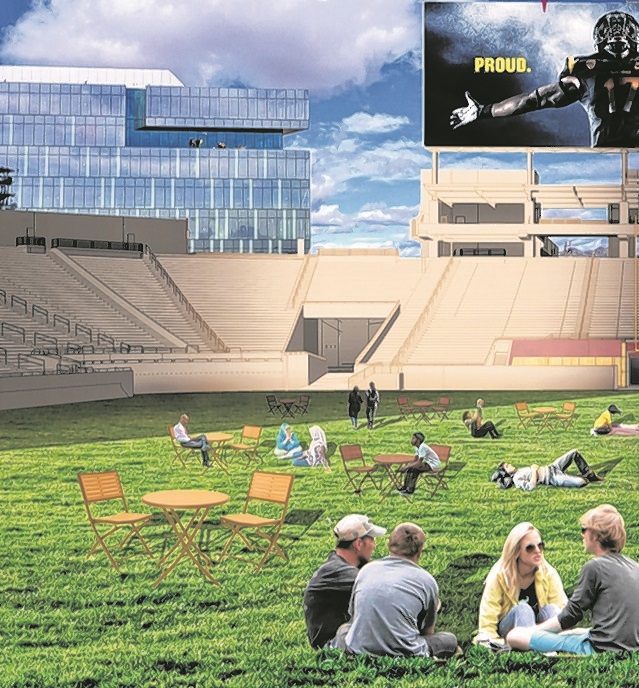
By Kody Acevedo
It’s the place college football fans in the Valley gather every Saturday to cheer on their Sun Devils. It’s the place Pat Tillman and Frank Kush left their legacies.
It’s also the place that’s going through a major facelift and you, the fans, may benefit in more ways than one.
Sun Devil Stadium is in the middle of a three-phase, $256-million renovation process. The idea, though, isn’t just to improve the game-day experience, but to also give the stadium a purpose during the offseason. To help brainstorm new ideas, Arizona State University turned to some in-house resources: its students.
“Every year, The Design School at ASU holds ‘The Cluster Competition’ for third-year design students,” said Patrick Griffin, president of ASU’s Graphic Design Senior Student Association.
“Once the students return from winter break they are broken up into groups consisting of several students from different design disciplines,” said Griffin.
The groups are tasked with solving a problem and given nine days to come up with a proposal. This year, their problem was the under-usage of Sun Devil Stadium and how more people could be brought to the stadium during offseason times.
“What could be done with Sun Devil Stadium on a 24/7, 365-day-a-year basis?” ASU Athletic Director Ray Anderson said. “It’s not just a football stadium.”
The competition began with about 30 teams that were eventually narrowed to six. The final group presented its ideas in front of design school faculty, students and such prominent ASU figures as the dean of the Herberger Institute and the director of the Design School.
Griffin’s team caught the university’s eye.
“Our presentation stood out from the others because, unlike the other teams, we had an emphasis on attracting all age groups, utilizing more than just one section of the stadium, and our renderings were by far the most visually appealing,” Griffin said.
Their idea was titled ‘Sun Devil Central,’ a community destination modeled after parks in New York City.
“We wanted Sun Devil Central to not only benefit ASU students but citizens of surrounding communities as well,” Griffin said. “Sun Devil Stadium would have set hours and student workers to monitor the area. It would be open to the public so the only things that would cost money are food and drink.”
Their plan proposed dividing the stadium into four sections: The field (Central Park) would be opened to the public during off-season so people can relax and play on the grass. The field can also be used for events like summer movie nights or morning yoga sessions.
Next, the concourse (Sun Devil Way) would be turned into a running track for physical activity while retaining food vendors for hungry visitors.
Third, the rooftop of the new athletic center would incorporate an area for toddlers (Lil’ Devil’s Playground) where alumni could bring their future Sun Devils.
Finally, a spot for the 21 and over crowd (Devilish Beer Garden) would be constructed and provide sweeping views of surrounding areas.
While this may sound like the stadium of the future, Griffin said nothing is set in stone just yet.
“Our ideas for Sun Devil Central were to be used by ASU as inspiration for the future of the stadium during off-season,” Griffin said.
“Nothing we proposed we know of will actually be implemented into the stadium; the name Sun Devil Central isn’t official either, but there is a possibility they might use it.”
No matter what the university decides to use, ASU has made it clear that the renovations to the stadium are not being taken lightly.
“We’re giving a lot of thought and attention [to the ideas],” Anderson said. “And so we are really excited about the reinvention project. Yeah we are going to play football there seven or eight days a year, but there’s going to be a lot more going on that involves the whole student body, the whole community and to have so many groups, particularly the student-led groups participating in the thought process has been a lot of fun and very productive.”

